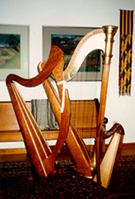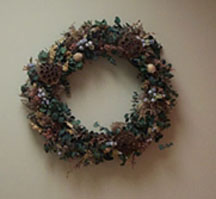| PATTERN 2 - Interactive Artworks |
|
Sensory stimulation in the form of interactive artwork should be provided along hallways. This will cause ambulatory patients to pause and receive visual and tactile stimulation from paintings, 3-dimensional artwork and tapestry. |
| JUSTIFICATION |
|
Walking paths that expose individuals to social and sensory stimulation are important to residents' well being throughout their wandering journeys (Cohen & Day, 1993). Inclusion of artwork in corridors converts them into hallways a reminiscence of home converting them into more familiar environments and increasing mobility of the residents (Brawley, 1997). The use of artifacts acts as a catalyst and also alter mood (Rapelje, Papp, & Crawford, 1981). It is suggested that while the provision of points of interest has a therapeutic value, it helps stimulate conversations and in some cases also assists in remembering past events. Artwork may also act as a focal point, in the absence of which the cognitively impaired patient may be left without anything meaningful to do and hence explore inappropriate places like a neighbors closet or the unit's store room (Brawley, 1995). While over stimulation may not be advisable (Calkins, 1988) the interactive artwork may be a reminder of a chore to be performed by them (personal observation). This also keeps them responsive and active, hence all artwork should evoke positive emotions. An interesting environment contributes to satisfactory behaviors in mentally impaired patients and benefiting different stages of wanderers (Hussain, 1985). The self-stimulator would find stimulation in the artwork: the exit-seeker would be distracted from egression and the boredom which causes wandering in the akathisiacs (the restless wanderers) due to unstructured time will be reduced. Providing residents with choices is the key (Dr. Shirley Travis, 1995) and helps in maximizing functional independence. |

|

|